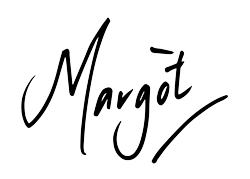‘Wherever you see a successful business, someone once made a courageous decision’
– Peter Drucker
Great leaders make great decisions – both for themselves and the businesses they lead.
When the founder of Walmart – Sam Walton – was asked ‘How did you become so successful?’ he replied ‘I’ve made a lot of good decisions’. When asked how he learned to make good decisions, he replied ‘by making lots of bad ones’.
Whilst this doesn’t sound all too encouraging, the reality is we will never make the right decision at the right time 100% of the time. The key is in understanding that learning to make good decisions takes practice. Just as we build up our strength and agility with a fitness regime we build our ability to recognise and make good decisions confidently through increased understanding and practice.
We all know that great decisions energize, enable and move us forward. They provide us not only with the fuel to go further but to do so with greater nimbleness, purpose and momentum. They don’t always guarantee great outcomes but they do create opportunity and progress. Conversely we know that poor decisions inhibit, stifle and slow us down. They take simple things and make them complex, distract us, and limit our influence, capability and capacity.
In a recent talk, Marcia Blenko, head of Bain’s global organizational practice and co-author of the book Decide & Deliver highlighted 4 critical components to decision-making effectiveness: Quality, Speed, Yield and Effort. Whilst she was discussing these from an organizational perspective there is great applicability to how we build and manage our own leadership and career pathways. Take a moment to consider:
Quality: Have I made high quality, effective decisions that provided value?
Speed: How timely am I in making decisions that provide my team and me personally with a competitive advantage?
Yield: To what extent do I actually execute decisions as intended?
Effort: Have I applied the right amount of effort with not too much or too little angst, energy or cost?
To truly maximise our performance and opportunity we need to ensure that we are operating with all four elements in our decision making process. Making poor quality but quick, well-executed decisions is not going to position us for success. However making high quality decisions in a slow, high cost manner is also going to ultimately limit our impact, success and future growth.
So how do we as individuals make these decisions count – for both the people we lead and ourselves as leaders?
As we enter a time of the year where many of us will be making some decisions about what we want from the year ahead I would encourage you to think about the following:
What do I want to achieve? Get clear about what you want both long term and short term. What do you personally want from your role and career – all too often as leaders we spend 98% of our time designing and executing business and growth plans for others but not for ourselves. Take the time to get clear about how you are using your talents, knowledge and skills to build your own career. When you do, not only will you achieve more but also operate with a higher degree of energy and fulfillment.
Why? Understand why you want this and remember your ‘why’ is unique to you. Is it setting you up for what you really want or is it what you have been told you should do, could be good at or what is typically the next step? Aligning your purpose with what you do is critical to building long-term momentum and impact.
Define the key actions: What decisions can I make today to help me move closer towards my goal or to clear the path so that it isn’t so difficult to move down in the future? Is it about delivering on the current opportunity; growing the capability and potential of your team; or investing in new learning or networks to educate you on your market, challenge thinking or heighten awareness of what is possible?
Who can help me get there? Identify and build your circle of influence. Conduct an audit on your network – have I got the right people to support me with where I want to go. Do I have a good mix between internal champions and external networks? Identify who you should be engaging with and what the mutual exchange of value would be and then make it a priority to engage.
Identify the critical milestones and timelines: All significant decisions need key measures and timelines to build momentum, energy and enthusiasm. It helps us not only stay the course but test the decision itself and overcome roadblocks along the way. Find an accountability partner who you can share your goals and ambitions with to further support your aspirations.
Failing to make a decision is still a decision. AND it is one that is almost guaranteed to hurt us if not in the short term then most definitely in the long term. Why not use this time of the year to stop and reflect on how your decisions have effected where you are today and what you can stop, start and continue to do in 2018 to grow your personal and leadership success.
As always I would love to hear your thoughts.


